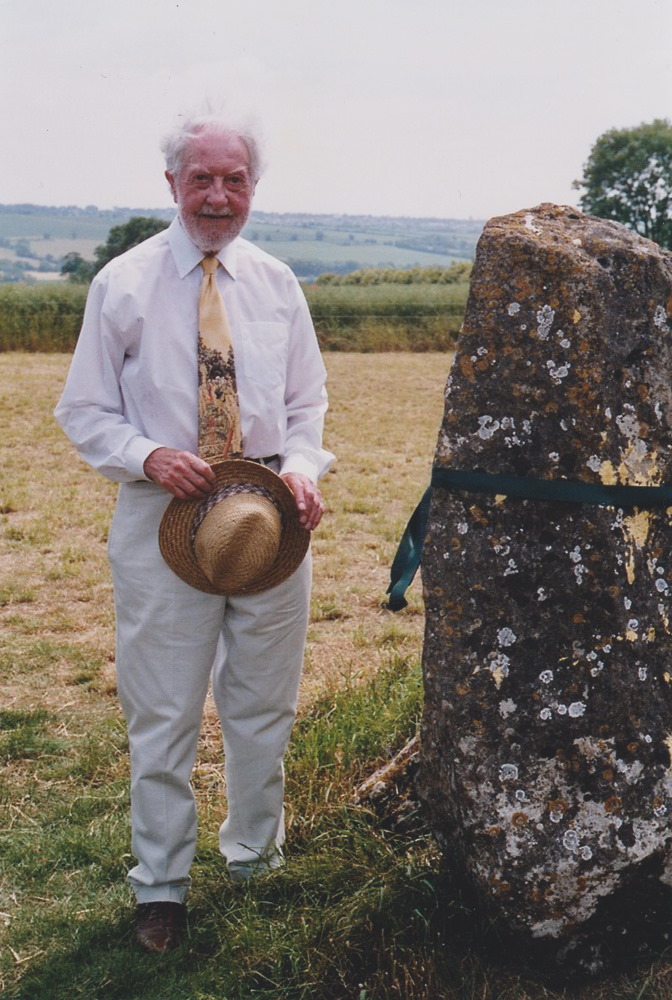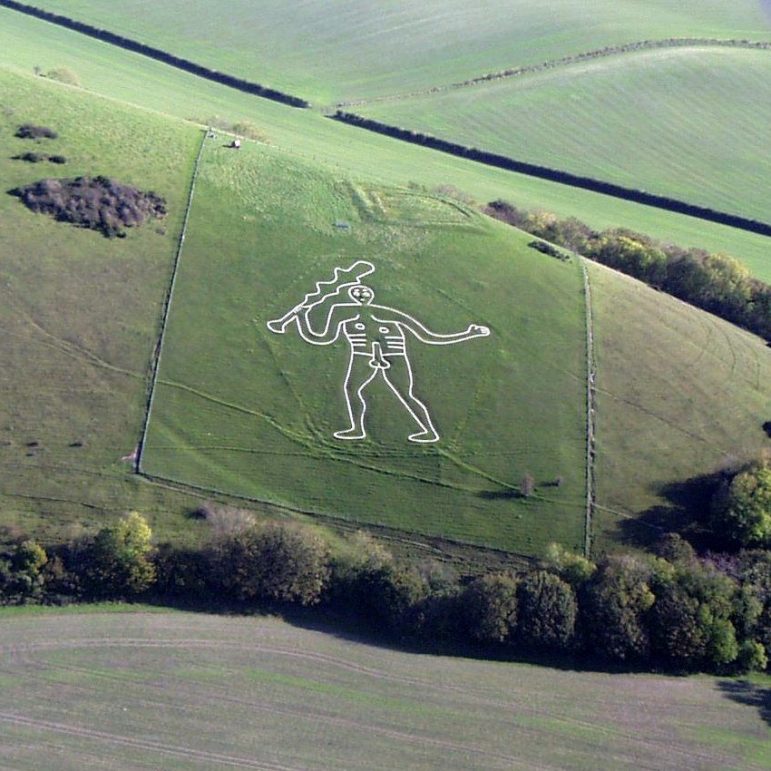
BIRMINGHAM, England – Aubrey Burl (24 September 1926 – 8 April 2020), who has died aged 93, was one of the foremost investigators of stone circles in the U.K. Described by the New York Times as “the leading authority on British stone circles,” Burl was the author of over 20 books on the subject.

Aubrey Burl – Image credit: Angela Lake (Contributory Member, The Megalithic Portal)
Burl’s career began with four years in the Royal Navy, followed by a stint teaching Latin at a private school. He took an M.A. at Leicester University, focusing on stone circles, and then took up a post lecturing in archaeology at Kingston upon Hull College of Education, from which he directed a number of digs, again at stone circles, in Northumberland, Moray, Aberdeenshire and the Isle of Arran. He wrote a number of popular books, including The Stone Circles of the British Isles (1976) with Yale University Press, Prehistoric Avebury (1979), Rings of Stone (1979) with photographs by Edward Piper, and Megalithic Rings (1980), along with many more. In 1980 his university department closed and Burl, having been made redundant, relocated to Birmingham, where he continued to conduct his research privately, visiting many more stone circles and megaliths, and producing a number of books.
A modest and enquiring man, Burl was a fellow of the Society of Antiquaries of London and an honorary fellow of the Society of Antiquaries of Scotland.
John Billingsley, Editor of Northern Earth, has described Burl’s books as “essential guidebooks” for those interested in stone circles, whether as tourists, archaeologists or those interested in the more esoteric side of these monuments.
Burl believed that it is critical to visit stone circles oneself, in order to build up a connection with the monument in its own landscape. He was not in favour of theories about, for instance, ley lines or earth energies, we shall see below, but unlike many professional archaeologists, he was quite prepared to engage with the Pagan community and said of his colleagues’ often disdainful attitude:
‘I don’t understand it… I’m quite happy to write for a pagan [sic] magazine; I don’t have to agree with everything, I don’t agree with everything – but if they’re interested in what I have to say, and they’re serious and sincere – why should I say no?’
Mark Pilkington of Strange Attractor Press is quoted in a recent obituary saying he “always trod carefully, listening to the stones, their histories and those of the landscapes around them, rather than chasing faddish rainbows. He foregrounded the importance of trying to respect and understand the world of the people who built them. ‘Too often the people who built the stone circles have been ignored’ he writes in Prehistoric Avebury (1979), while humanely dismissing contemporary lore about ley lines, earth energies, UFOs etc. as, ultimately, disrespectful: ‘The men and women of prehistoric Britain deserve better than this silliness.’”
Ancient oak damaged by fire
LEDBURY, England – Druids and other Pagans in the U.K. were dismayed over the weekend by the destruction of a 500-year-old tree, the so-called Whiteleaved Oak, in the Malvern Hills in Gloucestershire/Worcestershire. A spokesperson for Ledbury Fire Station said:
“It is with great sadness we report that at approximately 11.30 pm on Sunday night, Ledbury Fire Station attended a tree fire in Eastnor near Eastnor Castle. The tree was well alight when we attended and unfortunately it was not possible to extinguish quickly. Great efforts were made by the crew from Ledbury and also by a crew from Upton fire station.
“The crews ran out hose approximately 120 metres and used an appliance to shuttle water to and from the incident all through the night. Foam was also used to blanket the tree in great efforts to save it.
I am led to believe this tree is visited by people from all over the world and plays a large part in the rituals of Druids.”
It is not clear what caused the fire although the Pagan community has speculated about the unwise use of tealights. The British countryside has suffered somewhat after the easing of lockdown from fires caused by, for instance, abandoned BBQ sets.
New revelations about an old chalk figure
DORSET, England – The BBC reported over the weekend that a recent investigation into snails has shown that the priapic Dorset hill figure of the Cerne Abbas Giant is unlikely to be prehistoric, or indeed particularly ancient.

Cerne Abbas Giant – Image credit: PeteHarlow – CC BY-SA 3.0
Many historians currently believe that the famous chalk figure may be a satirical comment on Oliver Cromwell. Others believe that the beloved figure may be a reference to Hercules or even with an Anglo-Saxon deity.
The earliest mention of the giant is in 1694. The figure was handed over to the National Trust in 1920 by the Pitt-Rivers family. Tests suggest that he may have become covered over with grass for some time but was restored in the Victorian period. There is also an indication that the Victorian cutting may also have enlarged and extended the giant’s most famous attribute.
Senior archaeologist at the National Trust, Martin Papworth, and environmental archaeologist Mike Allen say that soil samples from the site have been submitted for analysis but have not yet been returned, due to delays as a result of the pandemic.
However, two species of snail appearing for the first time in Britain in the Roman period have not been found at the site although the samples do contain microscopic species of snail which are found for the first time in the Medieval period during the 13th and 14th Centuries. Mike Allen says
“They arrived here accidentally, probably in straw and hay used as packing for goods from the continent. Sadly, this shows the giant is unlikely to be prehistoric or Roman, and more likely dates to medieval times or later.”
We will know more in autumn when the soil tests are due to be completed via a technique known as optically stimulated luminescence (OSL).
Martin Papworth says that these are likely to “determine when mineral grains in soil were last exposed to sunlight” and will thus give a clearer indication of the age of the giant.
TWH will continue to follow this story, and report on the outcome of the soil samples once the information is made available.
The Wild Hunt is not responsible for links to external content.
To join a conversation on this post:
Visit our The Wild Hunt subreddit! Point your favorite browser to https://www.reddit.com/r/The_Wild_Hunt_News/, then click “JOIN”. Make sure to click the bell, too, to be notified of new articles posted to our subreddit.